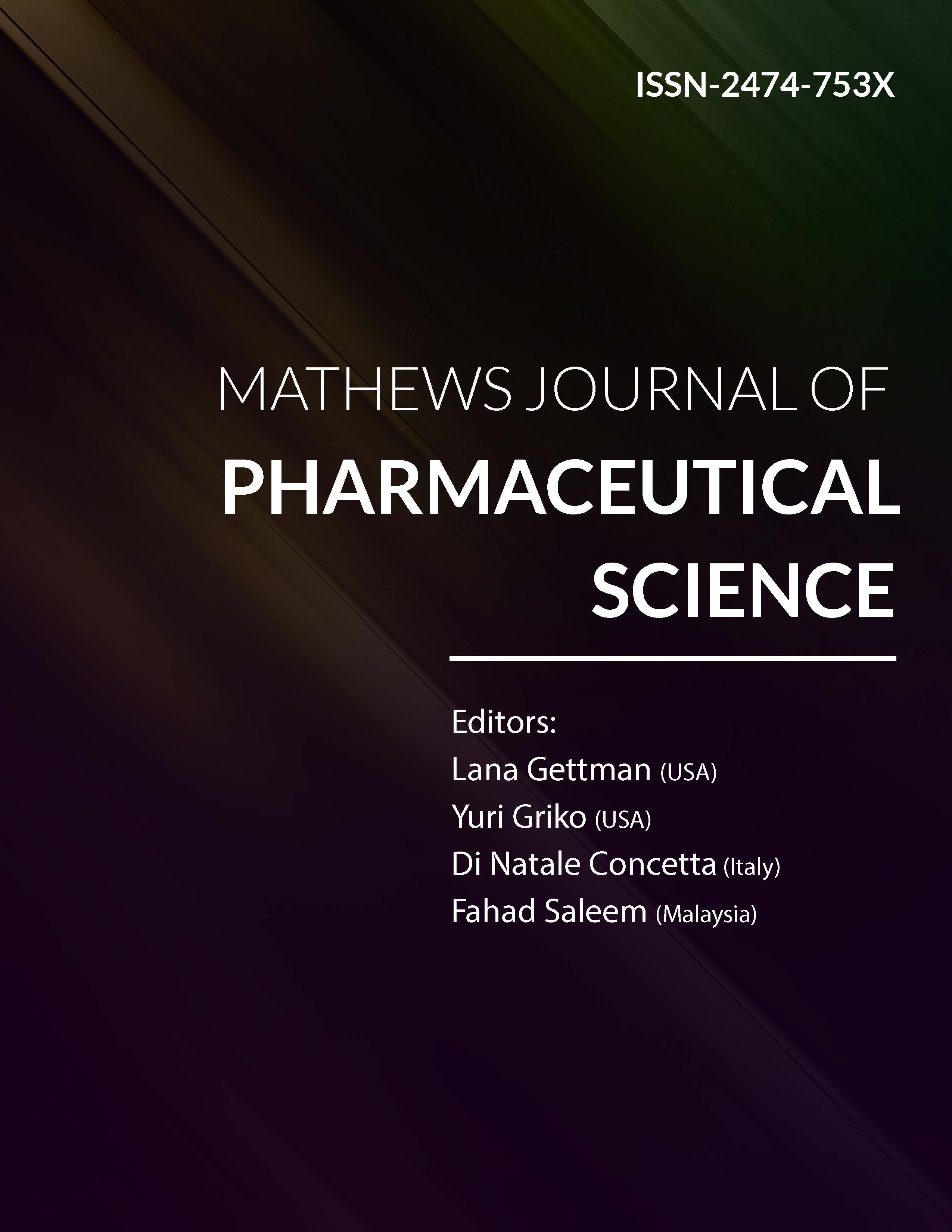
Information Links
Previous Issues Volume 8, Issue 2 - 2024
Preparation and In Vitro Evaluation of Ranitidine Floating Microspheres in The Treatment of Gastrointestinal Infections
Ezegbe Chekwube Andrew1,4,*, Nwankwo Emmanuel Chinedu1, Okafor Nnedimma Pauline1, Adaka Uchechukwu Bill1, Odo Kenechi Benjamin1, Anikwe Celestine Chidera2, Ezegbe Amarachi Grace3, Onyishi Doris Chiagozie1, Anyaoha Cross-Raphael Chukwuebuka1, Ugorji Anita Chidera1, Ikechukwu Miracle Chiemelie1, Nwodo Adanne Judith1, Aniagwu Ifunanya Sheila1, Onunkwo Chukwunwike Godswill1
1Department of Pharmaceutical Technology and Industrial Pharmacy, University of Nigeria, Nsukka, Enugu, Nigeria
2Department of Pharmaceutics, University of Hertfordshire, England, United Kingdom
3Department of Home Science and Management, University of Nigeria, Nsukka, Enugu State.
4Human and Natural Science Center, ABC Federal University, Santo Andre, Sao Paulo, Brazil
*Corresponding author: Ezegbe Chekwube Andrew, Department of Pharmaceutical Technology and Industrial Pharmacy, University of Nigeria, Nsukka, Enugu, Nigeria & Federal University of ABC (UFABC), Center for Natural and Human Sciences, Santo Andre, Brazil, Tel: +2348038042802, Email: [email protected]
#Co-corresponding author: Ezegbe Amarachi Grace, Department of Home Science and Management, University of Nigeria, Nsukka, Enugu State, Nigeria, Tel: +2348061114433, E-mail: [email protected]
Received Date: May 25, 2024
Published Date: September 17, 2024
Citation: Andrew EC, et al. (2024). Preparation and In Vitro Evaluation of Ranitidine Floating Microspheres in The Treatment of Gastrointestinal Infections. Mathews J Pharma Sci. 8(2):36.
Copyrights: Andrew EC, et al. © (2024).
ABSTRACT
Introduction: Ranitidine hydrochloride, a member of the H2-receptor antagonist class, is widely employed in treating gastrointestinal conditions like ulcers, gastroesophageal reflux disease (GERD) and Zollinger-Ellison syndrome by reducing gastric acid production. Microspheres, designed for extended drug delivery and enhanced bioavailability, were formulated and evaluated in this study. Aim: To develop ranitidine hydrochloride microspheres capable of prolonging drug delivery and improving bioavailability. Methods: The inotropic gelation method was utilized to prepare alginate microspheres incorporating polymers such as ethyl cellulose, sodium carboxymethyl cellulose, HPMC, and carbopol®. The resulting drug-loaded microspheres exhibited spherical rigidity after cross-linking with a 10% w/v calcium chloride solution. Evaluation parameters including Fourier transform infra-red (FTIR) analysis, precompression characteristics, percentage yield, swelling index, and drug content were determined. Results: The FTIR results obtained, showed there was no incompatibility among the excipients and the active pharmaceutical ingredient. The Scanning electron microscopy (SEM) obtained, indicated the presence of spherical particles present in the formulation. The pre-compression evaluation showed that the angle of repose ranged from 4.85 ± 0.02 to 7.22 ± 0.06o for batched F4 and F1 respectively, while the Carr’s index ranged from 73.5 ± 2.47 % to 87.00 ± 3.53 % for batches F-7 and F-1 respectively. The percentage yield ranged from 73.5 ± 2.47 % to 87.00 ± 3.53 % for batches F-7 and F-1 respectively. In vitro drug release studies revealed sustained drug release over 4 hours, with a maximum release of 69.50 ± 1.77 % observed for batch F-1. Conclusion: Overall, the optimised formulated ranitidine hydrochloride microsphere (F-1) demonstrated prolonged and controlled release characteristics, indicating its potential use in controlled drug delivery applications in the treatment of gastro-intestinal infections.
Keywords: Ranitidine Hydrochloride, Drug Delivery, Microspheres, Formulation, Ulcer.